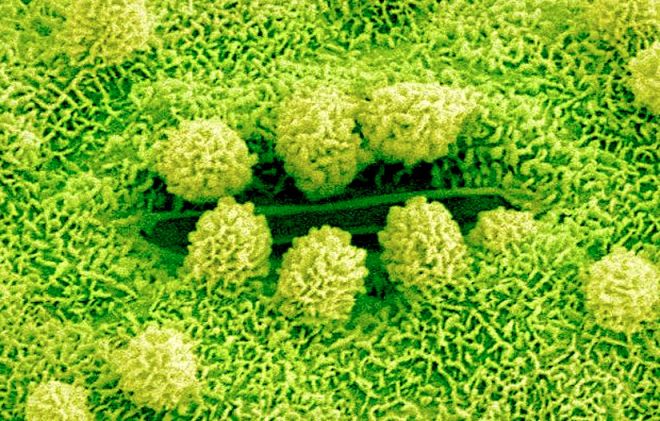
Plant Stomata Function
by Bailey R. (2017)
in Thought Co. –
https://www.thoughtco.com/plant-stomata-function-4126012
Stomata are tiny openings or pores in plant tissue that allow for gas exchange. Stomata are typically found in plant leaves but can also be found in some stems. Specialized cells known as guard cells surround stomata and function to open and close stomatal pores. Stomata allow a plant to take in carbon dioxide, which is needed for photosynthesis. They also help to reduce water loss by closing when conditions are hot or dry. Stomata look like tiny mouths which open and close as they assist in transpiration.
Plants that reside on land typically have thousands of stomata on the surfaces of their leaves. The majority of stomata are located on the underside of plant leaves reducing their exposure to heat and air current. In aquatic plants, stomata are located on the upper surface of the leaves. A stoma (singular for stomata) is surrounded by two types of specialized plant cells that differ from other plant epidermal cells. These cells are called guard cells and subsidiary cells. Guard cells are large crescent-shaped cells, two of which surround a stoma and are connected to at both ends. These cells enlarge and contract to open and close stomatal pores. Guard cells also contain chloroplasts, the light capturing organelles in plants. Subsidiary cells, also called accessory cells, surround and support guard cells. They act as a buffer between guard cells and epidermal cells, protecting epidermal cells against guard cell expansion. Subsidiary cells of different plant types exist in various shapes and sizes. They are also arranged differently with respect to their positioning around guard cells.
Types of Stomata
/stomata-588f504b5f9b5874ee0e5f96.jpg)
Stomata can be grouped into different types base on the number and characteristics of the surrounding subsidiary cells. Examples of different types of stomata include: